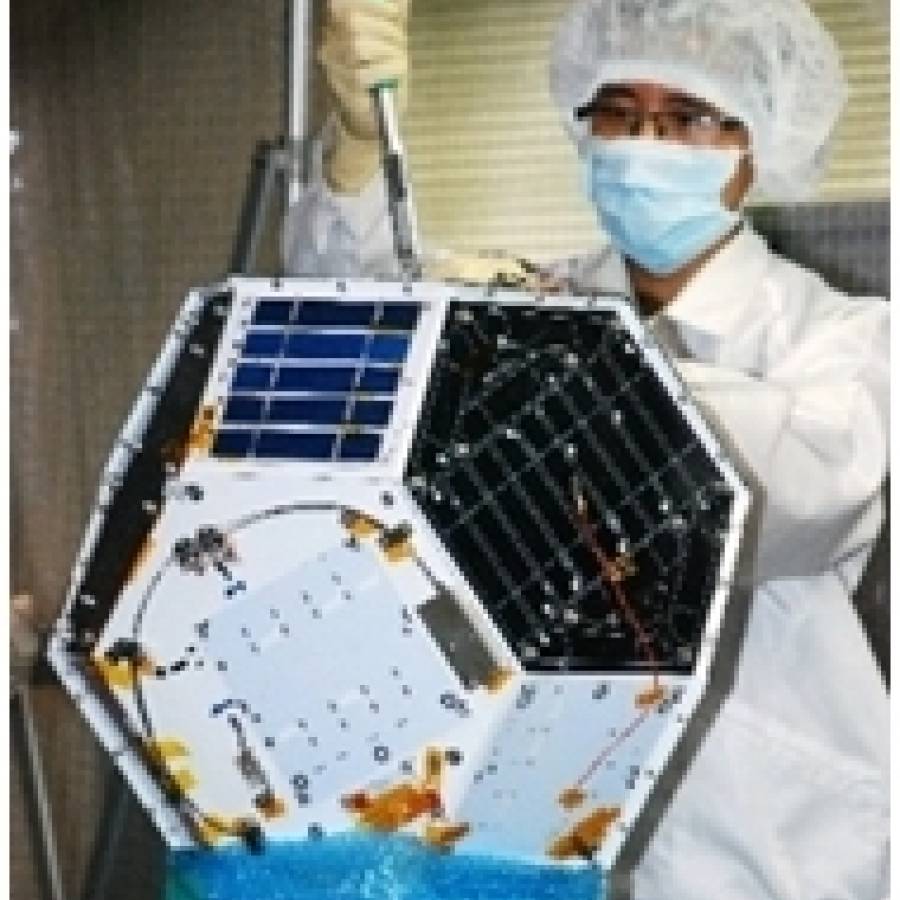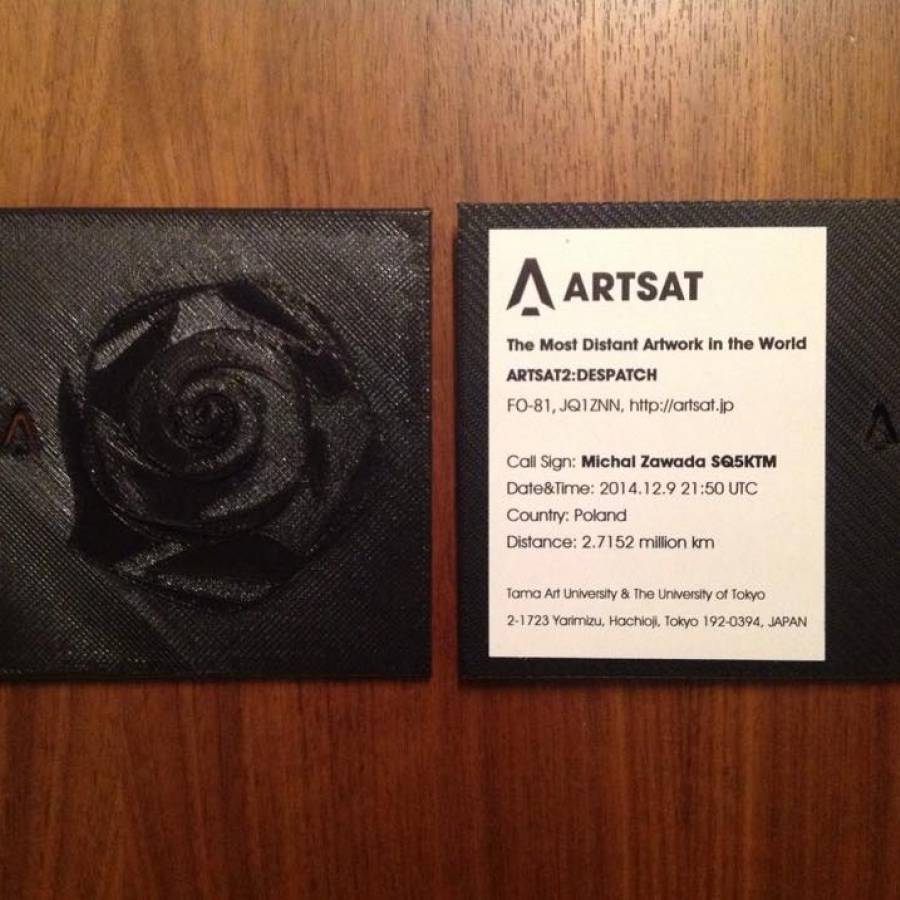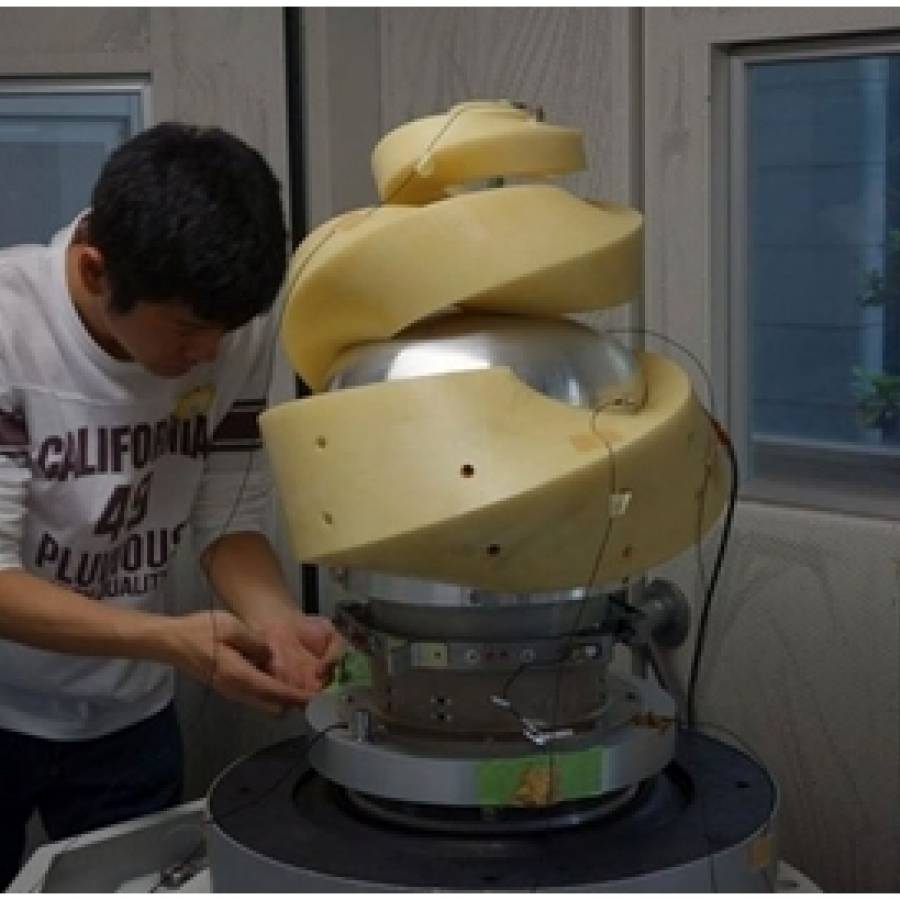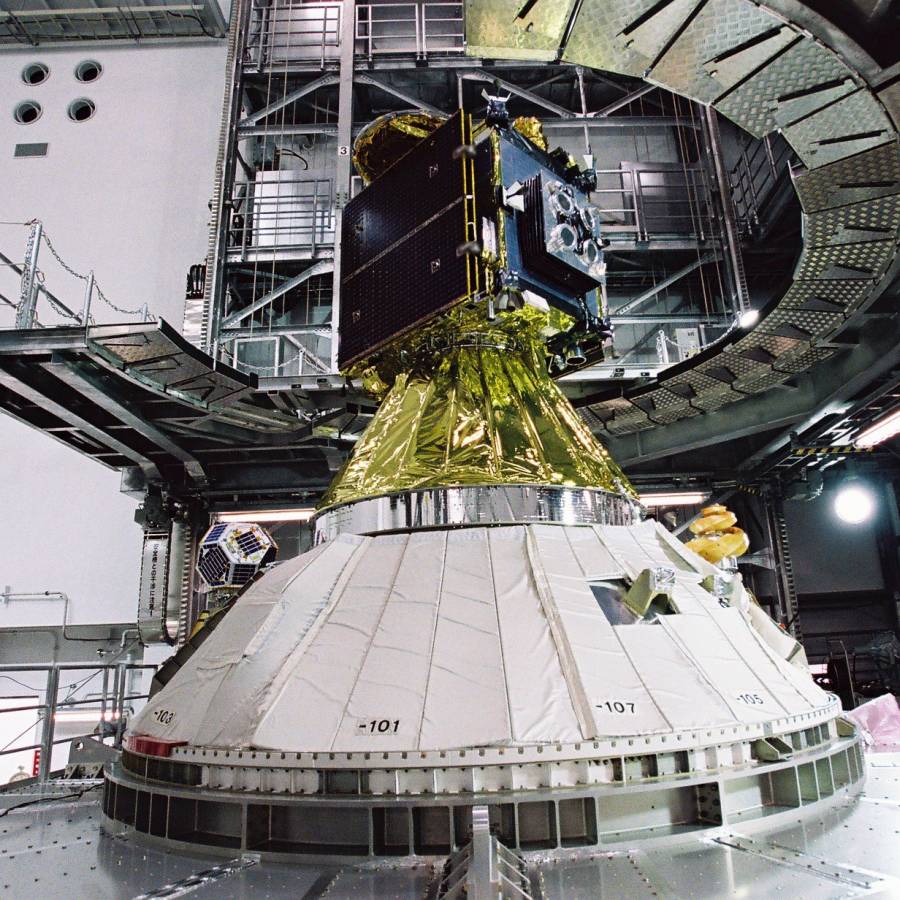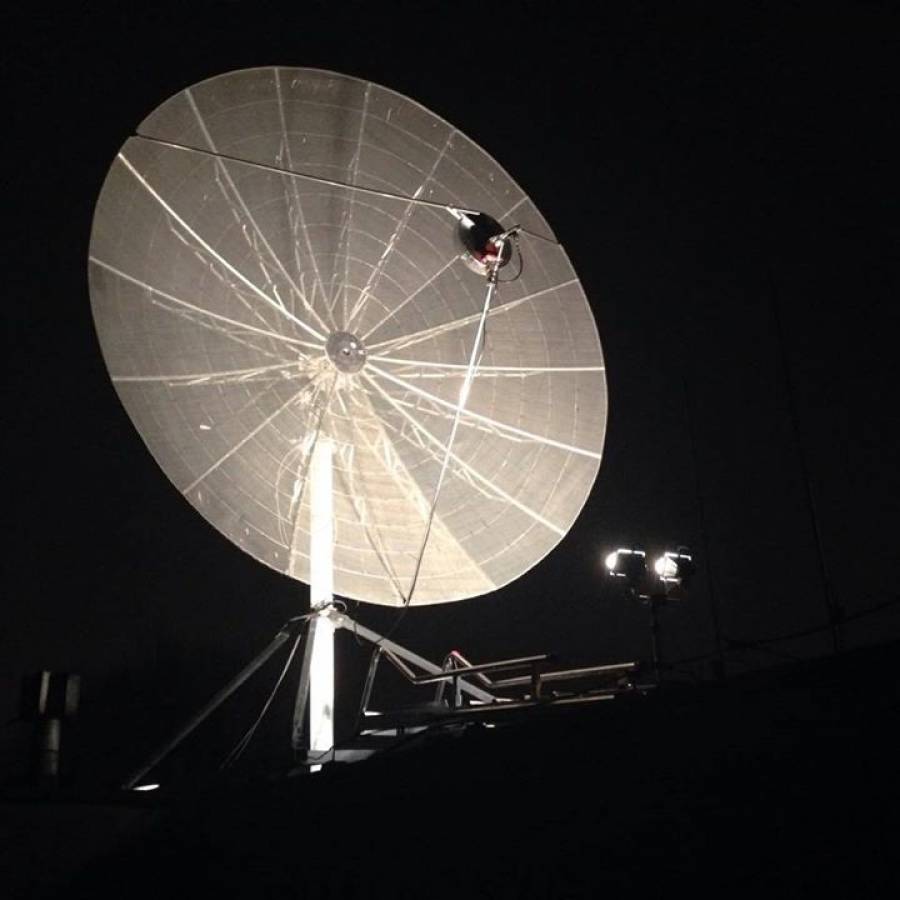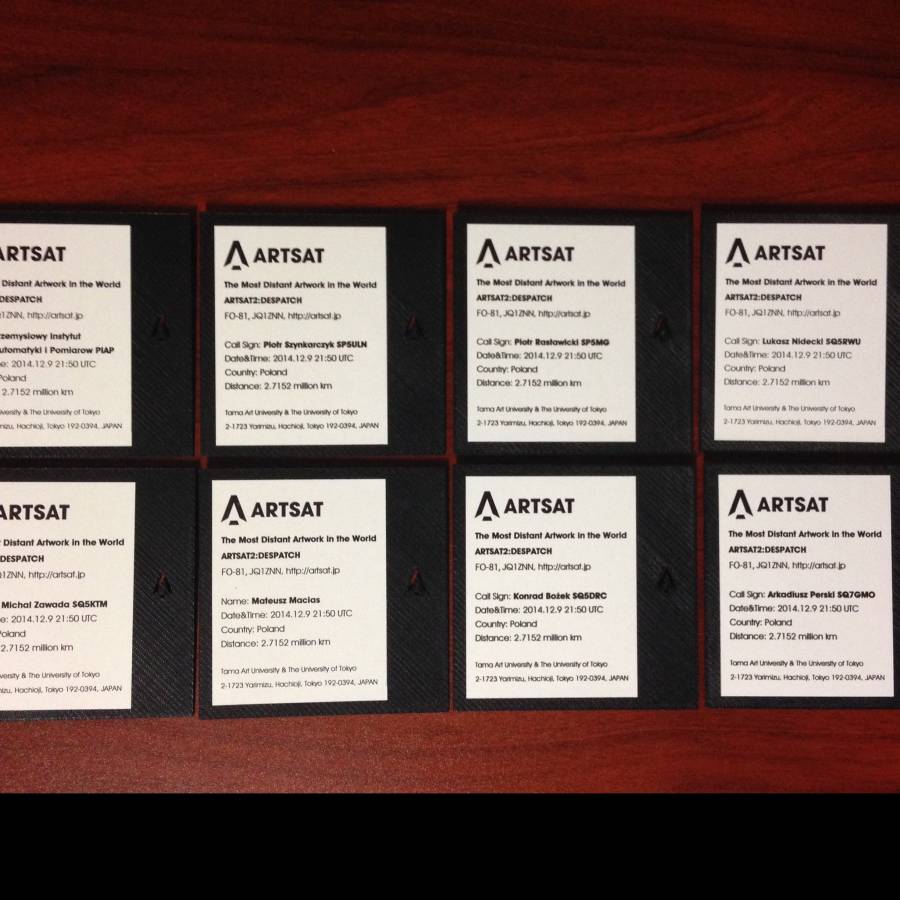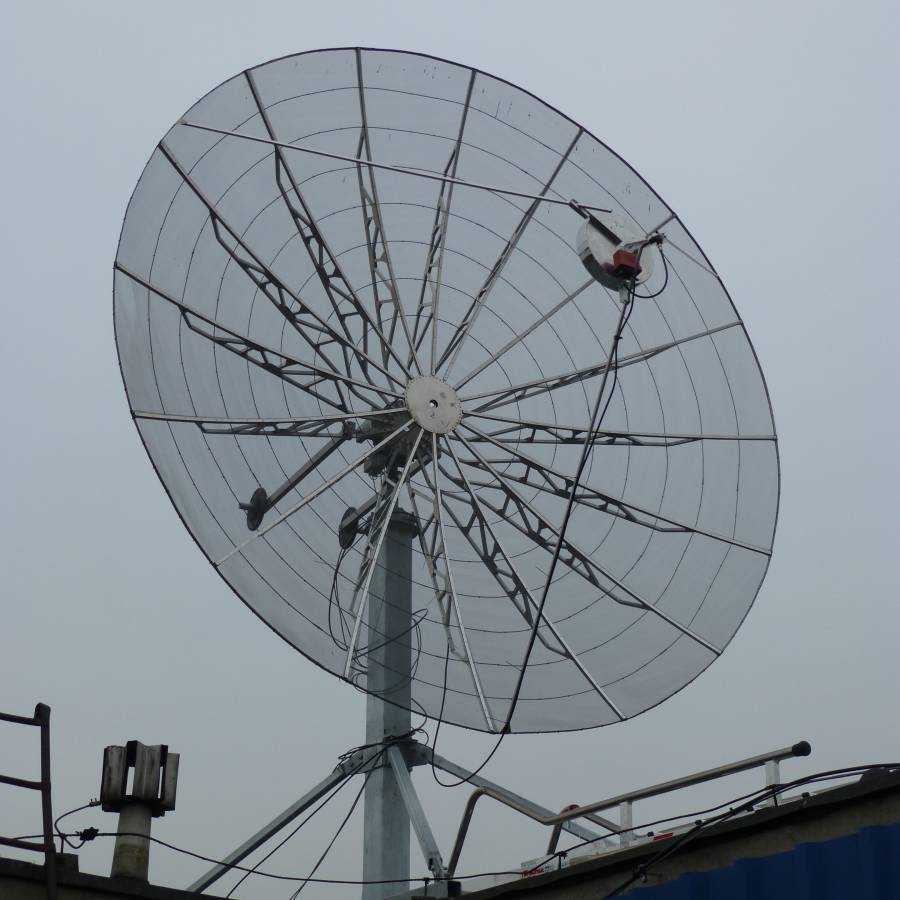ARTSAT-2 and Shin'En2 probes
Deep Space Communication
Reception of ARTSAT2:DESPATCH and Shin-en2 Space Probes
Piotr SP5ULN, Michał SQ5KTM, Piotr SP5MG, Łukasz SQ5RWU
Shin-en2 space probe was weighting 17kg and its overall dimensions were 490x490x475mm (http://www.shin-en2.jp/index_E.html). It was built by the students of Kagoshima University in Japan. It had on its board a transmitter operating in the digital mode similar to JT65, transmitting telemetry data on 437.385MHz with the power of 800mW.
ARTSAT2:DESPATCH space probe ("DESPATCH" - DEep SPace Amateur Troubadour’s Challenge http://despatch.artsat.jp/en/Main_Page) weighting 32kg and its overall sizes were 500x500x450mm. It was powered only by non rechargeable battery. It was built to broadcast data using a modified CW on 437.325MHz, with 7W of power. This space probe was the result of the work of about 70-person team from Tama Art University, and The University of Tokyo.
ARTSAT2 was the realization of a very original concept. The shape of the probe (a three-dimensional spiral) was designed by artists as a sculpture and was made using a 3D printer. Information from the probe was planned to be transmitted in three consecutive phases: at first full telemetry (phase 1) for about 10 hours from the launch, then the generative poetry (phase 2) up to about 110 hours from the launch, then (phase 3) only the temperature inside the probe (until the end of battery power).
Sent by the probe in the second phase poetry was generated by the on-board computer and was inspired by the data from the on-board sensors. It was not a replay of previously written verses, poetry was generated live by the on-board computer probe.
An interesting element of the mission was to establish a collective ARTSAT2 receiving of the probe signal by radio amateurs scattered around the globe. In a view of the expected distances, the creators of the space mission assumed that the individual listening stations will only fragmentary receive signals transmitted from deep space. Therefore, each received signal had to be sent to the operators of ARTSAT2 along with precise timestamps. There, the information was reconstructed to the complete data frames and decoded.
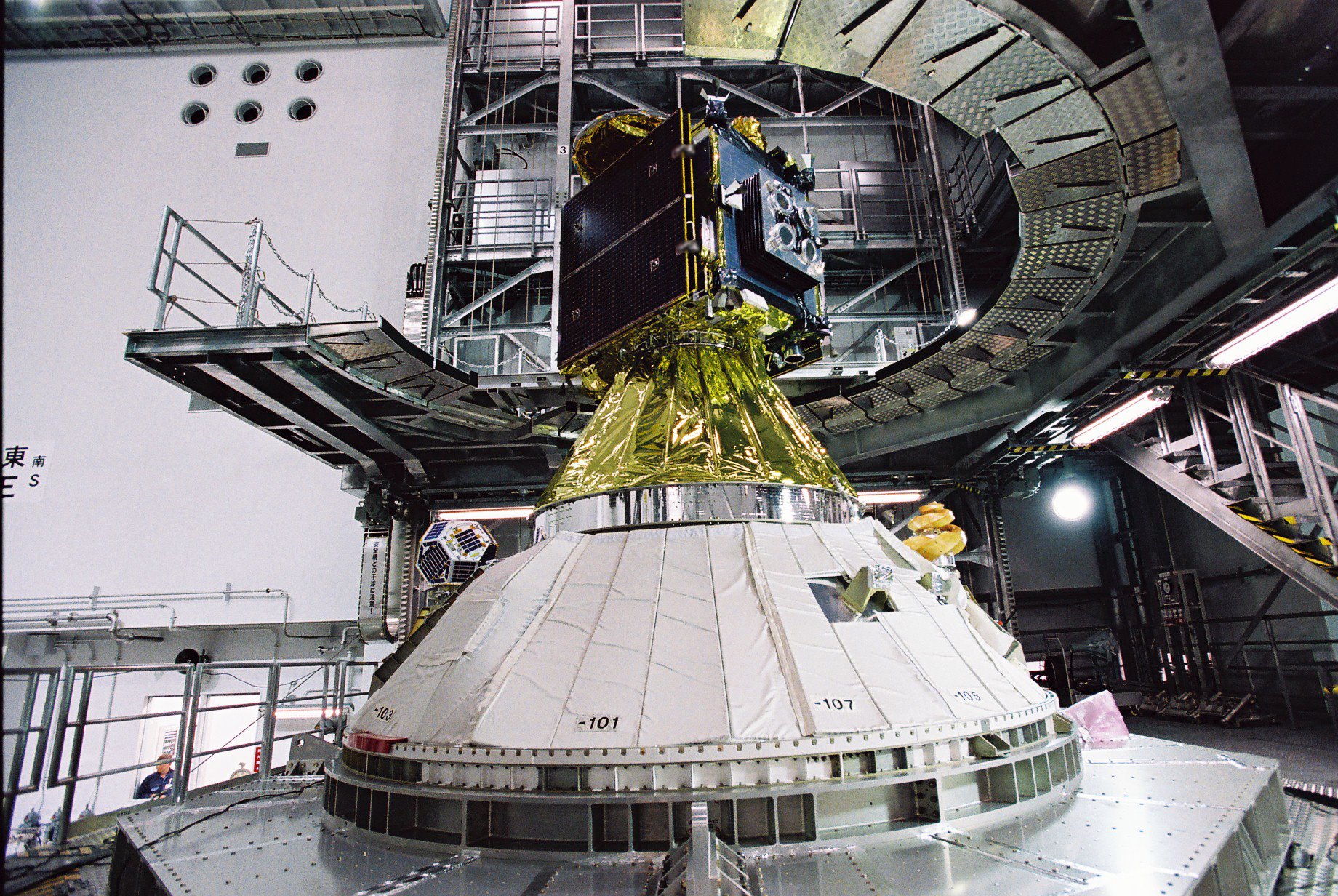
Design and building of a ground station
By happy coincidence of various circumstances, on the roof of Industrial Research Institute for Automation and Measurements (PIAP institute) in Warsaw (Poland), where (among others) research associated with reception and analysis of radio signals from an orbit is carried out, mesh dish parabolic antenna with a diameter of 4.5m appeared just before the start of the Hayabusa2 probe. At this time there were no other installations associated with the planned research activities. This occasion was used to obtain the approval of the management of the PIAP institute for temporary use of this installation for amateur radio experiments.
Such opportunity does not happen often, so the project initiative group (SP5ULN, SP5MG, SQ5KTM, SQ5RWU) started the preparatory work. There was very little time - the scheduled launch was on 11/30/2014, but the first mail in this regard was sent by the originator SP5ULN on 11/24/2014. Quick analysis indicated that almost all equipment was somehow available, there was a chance to built the ground station fast enough, except that there was no dish feed for 70cm band.
A review of available information on the design of dish feeds and discussions on the local FM channel led quickly to the conclusion what type of dish feed was within reach. Building it was like a race. SP5MG made it. After just few days he delivered working and tuned dish feed. Interesting link on 70cm band dish feeds: http://www.2ingandlin.se/Feed_comp_432_MHz.html
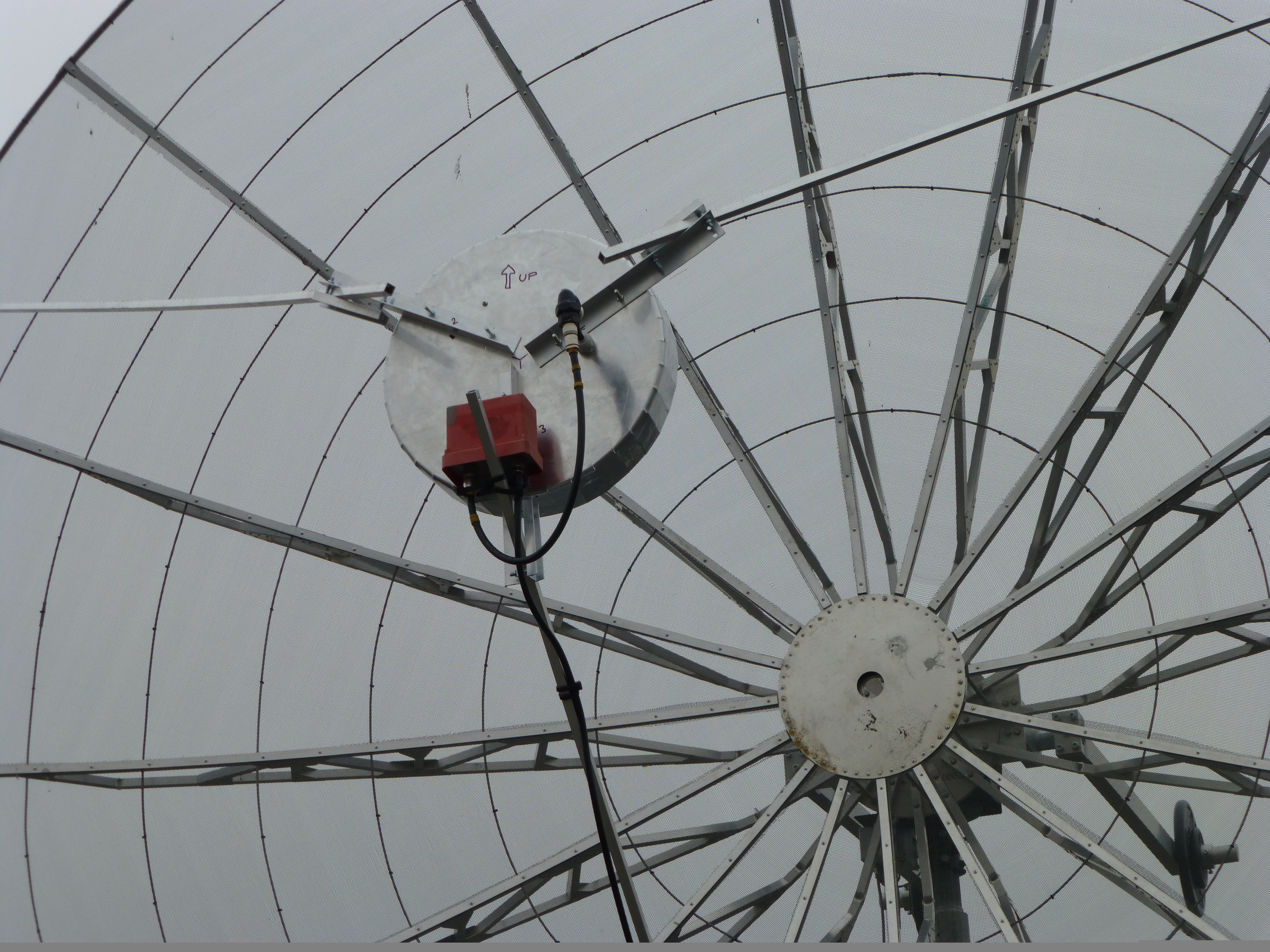
The logistics of preparation and technical content were quite complex, and for all this in practice only one week was available. All works were performed during private time. SQ5DRC, SQ7GMO and other volunteers started to help us. There was a lot of other critical preparatory work, like: design and making of a mechanical holder for the dish feed on the antenna; development of a method how to find the focal point of the antenna; development of rotor control software (made finally by SQ5RWU); development of software to decode the data received from the probes (also made by SQ5RWU); and many other tasks.
The end of a very tight schedule was on Sunday 11/30/2014 with the morning meeting at the place where the ground station was supposed to be built, in order to mount the dish feed on the antenna and make the test run of all subsystems, and finally to test the whole setup. It was possible to complete all tasks in eight hours, including a few hours on the roof at freezing temperatures.
On 11/30/2014 Sunday afternoon, the ground station was assembled and tested (including the use of real radio signal simulating ARTSAT2 beacon, made by SQ5RWU and installed few kilometers from the station).
Launch of Hayabusa2 was postponed several times. Finally the mission was launched on Wednesday 12/03/2014 at 04:22 UTC.
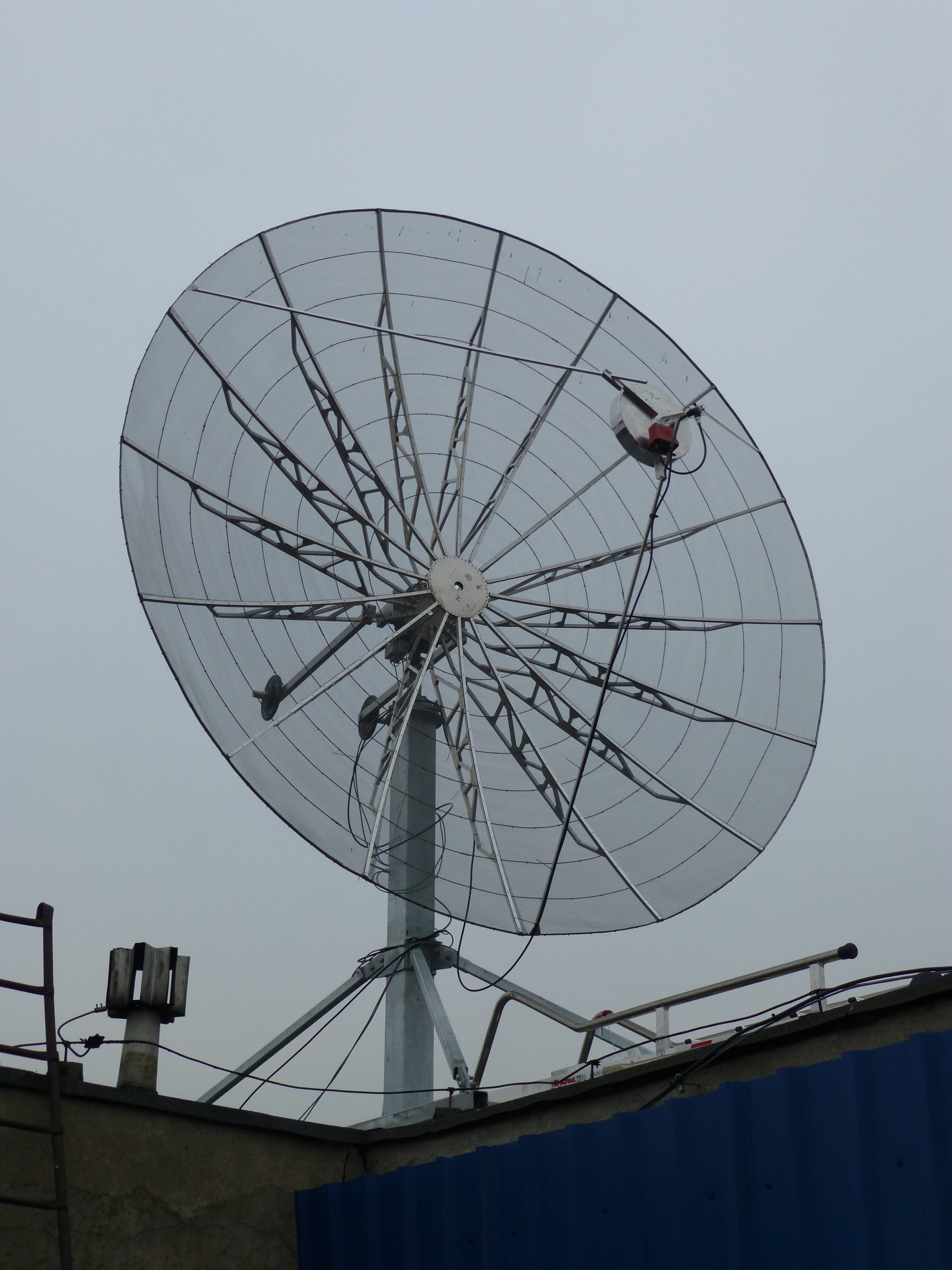
Dish antenna used in a project, with dish feed at the focal point, and with preamplifier.
Dish feed seems to be small in comparison the size of a dish antenna, but it is quite big one with its 43cm diameter.
Waiting for the first signal (night 3/4.12.2014)
Both space probes (ARTSAT2 and Shin-en2) every day were within the range of our location from about 7:45p.m. to about 2:15a.m. local time. The maximum elevation of about 8 degrees above the horizon was every night around 11:25p.m. This meant sleepless nights, but the enthusiasm and hope among a team allowed to push this to the end of the problems queue.
Until the very last moment it was not known whether the whole effort will not be wasted, but everyone at the station were sure that the stake was high.
The task of operating ground station the team faced was quite extensive. During the reception of signals from space probes it was necessary to do the following simultaneously:
- supervision of the parabolic dish antenna and rotor,
- radio operations: tuning, selection of filters and gain, Doppler shift compensation,
- storing data (screenshots, movies, time-stamped records)
- browsing the Internet in search of any information about the current status of the two probes (i.e. whether they are operational, whether they changed frequency, does anyone receive them, …)
- making our own attempts to decode the received signals,
- other ancillary works.
It was enough work for at last 4 people at a time.
Space probes have come into the range of the Japanese stations and first reports in the Internet appeared. So the probes were working, now the only question was whether our station was good enough to receive anything. Distance already exceeded 300,000km. Around 7:30p.m. local time we all were focused on our tasks, but the tension was seen and heard. At the time of emergence of the space probes on the horizon, station was operating in full swing. After a while, on the waterfall screen we saw a clear signal of ARTSAT2, and we even heard sound of it. We enjoyed it with the happy shouts, but very soon returned to work. We knew that every bit of the received information is valuable. Accompanying us observers asked: "do you always celebrate success in so muted way?". We enjoyed this success, but everyone had so much work that it wasn’t time for excessive exaltation.
The received signal was strong and stable, but after a few minutes it disappeared. Was this the end? Any attempt (radio settings, change of the frequency, antenna movements) did not produce any effect. We tried to pick up Shin-en2 and succeeded, which was some consolation.
Then the Internet have gained new information. The probe ARTSAT2 overheated, so onboard safety system forced transmission cycle of 20 minutes ON and 50 minutes OFF. Operators of ARTSAT2 published schedule of transmitter work. We set alarm clocks (for "five minutes before" and "now") and started listening to Shin-en2. The transmitter at 0.8W at a distance of 300,000km was not a challenge for our station.
Example movie footage of Shin-en2 reception is available at the following web address:
https://www.youtube.com/watch?v=rmVW_LKShAg
Received signals almost on a regular basis we were sending to both Japanese space probes operators. Their response was very positive. It turned out that our station was receiving the strongest signal.
After midnight, when azimuth exceeded 180 degrees, signal strength decreased and later we picked up nothing. Both space probes were moving away from the Earth very quickly, almost 400,000km per day. The disappearance of signals could mean that this is the end of the capabilities of our hardware. Last reception of ARTSAT2 was at a distance of 320,000km.
Before 3:00a.m. station was closed and we agreed to do next day a series of experiments to find eventually better position of the dish feed on the antenna. The next day we all went to work in the morning, which was challenging considering that in practice most of us could sleep for only three hours. We were full of doubts about the further reception of both space probes.
The second night, 400.000km farther (4/5.12.2014)
We met a little earlier than last time, and using the signal from a nearby repeater, we set the antenna characteristics. Significant help in this task, among others, we have received from Konrad SQ5DRC. We were moving around dish feed position and setting antenna characteristics. We were looking for sharpest characteristics (the narrowest beam) and the strongest signal. We assumed that we could obtain stronger reception of space probes. But it turned out that the old saying is true: "perfect is the enemy of good". After more than an hour we set everything back to its original position, which turned out to be the best one.
That night a challenge for our station was set at the distance two times greater than that separating Earth from the Moon. This night ended with the result of 742,179km and it was then the highest score in the world! We received two probes: ARTSAT2 and Shin-en2. Japanese operators of ARTSAT2 probe sent us congratulations.
Another nights, another records
Nights 5/6.12 and 6/7.12 brought more records: 1.1 million km and 1.5 million km for both space probes. After each of those nights we discussed whether to come back next night to the station. We made the next attempts and in some way we were surprised that we were still in game. These distances were already becoming difficult to imagine.
We started to feel physical fatigue. It is not easy to sleep for 3 hours, work normally during a daytime, then work in our station until 3:00a.m – and so on day by day. At the end of the night 6/7.12 we had had enough. However, the next morning, it turned out that the station in Argentina received ATRTSAT2 from a greater distance than we did. That was what we needed, motivation appeared and we took the challenge.
The fifth night (7/8.12.2014)
Next session we started full of doubts. Each day it was 400,000km more. This time it was already 1.9 million km. We made it!
At that time, ARTSAT2 has already entered the third phase. Signal allowed to read the temperature inside the probe. The signal was supposed to be sent in the 3 seconds periods. But what we received was not entirely in accordance with these assumptions. Luckily we had constant communication with Japanese space probe designers. They confirmed that what we received was a signal of ARTSAT2. It turned out that the published documentation was a little bit incorrect, and the period of the transmitted information was not 3 but 5 seconds.
Based on data from our station, temperature inside the ARTSAT2 probe was estimated at 55 deg. C.
We also received Shin-en2, but the signal was very weak. It was only 0.8W received from a distance of 1.89 million km!
The sixth night (8/9.12.2104)
Distances were growing fast. That evening we were almost certain that this is the end, and that receiving anything from a distance of more than 2 million km is too much for amateurs. These distances we were associating with a NASA's Deep Space Network, and not with the efforts of a group of enthusiasts. Nobody said it aloud, but we knew that this time it may end up on a social meeting.
And then it turned out that we still receive ARTSAT2. Shin-en2 unfortunately no, though some traces were visible on the waterfall diagram. This night we finished with an amazing result 2.316759 million km, or 7.73 light seconds!
On the basis of our data ARTSAT2 inside temperature was calculated to be almost 60 deg. C. Since two days we were the only station on Earth receiving anything from probes. In this context, the hobby began morphing into the real mission and we felt responsibility.
The seventh night - the last one (9/10.12.2014)
This time it was really hard. Received signal was so weak that before we anywhere announced its reception, we sent our data to operators of ARTSAT2 space probe asking for their verification. The next day came the official answer:
"[...] Confirmed your data. The frequency is OK (<100Hz) and the duty ratio is 50%. We are sure it is the Despatch's beacon signal:-)".
Our result on that day was to receive readable telemetry data from ARTSAT2 several times, but the most distant one was at 2.715228 million km, which is more than nine light seconds. There is a chance that it is a world record in the discipline of the amateur long distance reception of space probes - in terms of decodable signals, not only any registration. It also the third day, when we were the only Earthlings receiving a signal from the ARTSAT2 probe.
At this point we decided to end the project. We worked for 7 nights, it was a big challenge for us (and our families). We were so tired that we did not even made a commemorative photo.
Movie recording of this session is available at the following Internet address:
https://www.youtube.com/watch?v=3uW1ZQYuqFo
Conclusions
Despite the colossal effort (and it all was after the marathon preparations), it was a memorable and interesting adventure. A unique experience was the opportunity to see live reception of the space probe signals from a distance of almost 3 million km.
When we started to receive data from a large distance, the signal appeared from time to time. It seemed like looking through a garden hose with a length of 3 million kilometers, which was bending in all directions, but from time to time by accident was straightened and it allowed to look for a moment until its end.
Our achievement has been recognized by international amateur radio organizations, space agencies employees, astronomers. Signals of that we had received through phone calls, Facebook and e-mails. It turned out that with such a project, an important role was played by the direct relationship with the internet media. Our mini press office run by SQ5KTM at the end of each day was preparing an information package, which included information note, photos and screenshots. We wanted to not only to make our work results public, but also to ensure regular and appropriate messages (i.e. to avoid inaccuracies in reports on various sites and blogs etc.). Furthermore a very important was ongoing communication with Japanese operators of both space probes, especially in terms of collected data transfer (tens of gigabytes finally). Also it was useful for confrontation of a theoretical models with the real observations of received telemetry.
There were also several reports of reception ARTSAT2 from a distance of the order of 4.7 million km, but most likely these signals were not decodable.
Our efforts and successes have rebounded fairly wide coverage on the Internet. Here are a few selected web addresses:
- AMSAT-UK:
http://amsat-uk.org/2014/12/09/despatch-2m-km-record/
- AMSAT bulletin:
http://amsat.org/pipermail/ans/2014/000823.html
- ARRL:
http://www.arrl.org/news/polish-radio-amateurs-receive-3d-printed-artsat2-despatch-qsl-card
Operators of our ground station during all of the nights were: Piotr SP5MG, Piotr SP5ULN, Lukasz SQ5RWU and Michal SQ5KTM. We received great technical support from Arek SQ7GMO and Konrad SQ5DRC. Also we got the help from PIAP Institute employees (but of course afterhours, in their private time). Guests visiting our station: Tomasz SP5XMU, Krzysztof SQ5NWI, Jacek SQ5AAG and few other not licensed friends.
